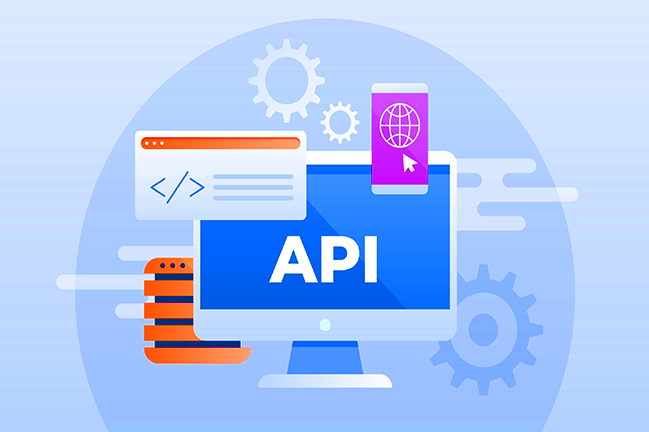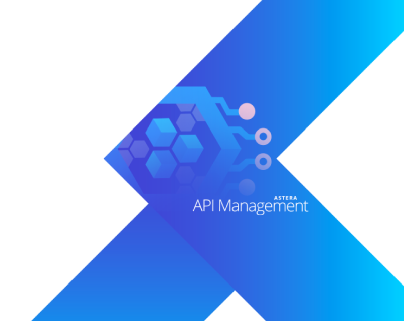API development facilitates efficient data sharing, enhances interoperability between systems, and drives digital ecosystem growth. APIs are at the core of modern applications and systems. In fact, 56% of enterprise leaders agree that APIs help them build better digital experiences and products.
So, how do you develop APIs correctly, ensuring they seamlessly connect to the digital world and drive the growth of digital ecosystems? The answer lies in a series of best practices and strategies that pave the way for effective and user-friendly API development.
Understanding API Development
An API, or Application Programming Interface, serves as a bridge between different software systems, enabling them to communicate and share data seamlessly. APIs come in many shapes and sizes, from RESTful web services to SOAP endpoints, but the principles for creating effective APIs remain fairly consistent.

Best Practices and Strategies for API Development
1. Define Clear API Objectives and Goals
Every successful API starts with a clear purpose. Define the objectives and goals of your API project before writing a single line of code. What problem does your API solve, and who are the intended users? Having a well-defined scope helps you avoid feature creep, i.e., excessive features that make an API too complicated or difficult to consume, and ensures your API serves its intended purpose effectively.
2. Use Meaningful and Consistent Naming Conventions
Choosing meaningful and consistent naming conventions for your API endpoints, methods, and data structures is essential. It makes your API more intuitive and user-friendly, reducing the learning curve for developers interacting with it. Be concise and maintain a standardized approach to naming.
3. Version Your APIs to Maintain Backward Compatibility
As your API evolves, it’s critical to maintain backward compatibility with existing clients. Versioning your API allows you to make changes and improvements without breaking the functionality for users of older versions. Follow a clear versioning strategy (e.g., using URLs or headers) to manage these changes effectively.
4. Implement Proper Authentication and Authorization Mechanisms
Security should be a top priority in API development. Implement robust authentication and authorization mechanisms to ensure that only authorized users can access your API’s endpoints. Options include OAuth, API keys, and JWT tokens, depending on your application’s requirements.
5. Document Your APIs Comprehensively
Comprehensive and well-maintained documentation is the lifeblood of any API. It serves as a reference guide for developers, making it easier for them to understand how to use your API effectively. Include clear examples, use cases, and details about endpoints, requests, and response formats.
6. Provide Descriptive Error Messages and Status Codes
Users should receive informative error messages and status codes when something goes wrong in an API request. Well-documented error responses help developers quickly identify and resolve issues, improving the overall user experience.
7. Validate Input Data and Handle Validation Errors
Input data validation is essential for the security and reliability of your API. Validate user input to prevent common security vulnerabilities like SQL injection and cross-site scripting. Ensure that you handle validation errors and provide meaningful feedback to users.
8. Optimize API Endpoints for Performance and Scalability
API performance can significantly impact the user experience. Optimize your API endpoints for speed and scalability. Use techniques like caching, pagination, and asynchronous processing to enhance performance while ensuring your API can handle increasing loads of user requests.
9. Implement Rate Limiting and Throttling to Prevent Abuse
To prevent abuse or overuse of your API, implement rate limiting and throttling. Set limits on the number of API requests a user or client can make within a specific time frame. This helps maintain fair usage and protects your API from abuse.
10. Use Appropriate HTTP Methods (GET, POST, PUT, DELETE) for CRUD Operations
Follow the HTTP methods (GET, POST, PUT, DELETE) convention for CRUD (Create, Read, Update, Delete) operations. This aligns your API with standard practices, making it more intuitive for other developers to work with.
Understanding the Limitations
- Technical Complexity: API development demands expertise in various programming languages and protocols.
- Resource Intensive: Building and maintaining APIs can require significant resources, including development time, server capacity, and operational costs.
- Learning Curve: For those new to API development, there is a learning curve. It may take time to grasp the intricacies of APIs fully.
- Security Concerns: Ensuring robust security measures is essential. APIs can be vulnerable to attacks if not adequately protected.
- Versioning Challenges: Managing different versions of an API can become complex, necessitating careful planning and execution.
- Coding Expertise: Traditional API development often requires coding skills, which may not be the preferred approach for all projects. Consider no-code or low-code solutions to bypass this limitation.
Following the best practices and strategies outlined above and acknowledging the limitations, you can create robust and user-friendly APIs that contribute to the growth and connectivity of modern enterprises and provide a seamless experience for users and developers alike.
Simplify API Development with Astera

Now, let’s explore how Astera’s no-code API development solution can assist you in implementing these guidelines effectively.
Streamlined Development
Astera API Management simplifies the API development process with its no-code environment. You can define clear API objectives and goals effortlessly. Developers can focus on business logic while the platform takes care of the technical intricacies. This ensures that your APIs are aligned with your organization’s objectives and reduces development time.
Automated Documentation
Astera API Management includes built-in features for creating comprehensive API documentation. You can generate clear and up-to-date documentation with ease, detailing endpoints, request-response formats, and authentication methods. This ensures that your APIs are well-documented, reducing confusion and friction for developers.
Security and Versioning
The platform offers robust security features, including authentication and authorization mechanisms. It also simplifies versioning, making it easy to maintain backward compatibility as your APIs evolve. Astera API Management allows you to implement these critical best practices without diving into complex coding, reducing the risk of security vulnerabilities and ensuring smooth transitions between API versions.
Performance Optimization
Astera API Management simplifies the process of optimizing API endpoints for performance and scalability. Its built-in features allow you to manage caching, fine-tune database queries, and integrate content delivery networks (CDNs) with ease. This ensures that your APIs are designed for efficiency and high performance, meeting the demands of large-scale enterprise applications without the need for complex coding.
Astera simplifies the development process, automates documentation, and ensures robust security. With features that streamline performance optimization, rate limiting, and versioning, the no-code API development tool empowers you to create APIs that align seamlessly with your enterprise objectives.
Ready to see Astera API Management in action? We’d love to show you how it works! Reach out to us at [email protected] to take the first step towards efficiency, security, and innovation today.
Reduce API Development Time by Up To 80% With Astera
Simplify API development through an intuitive, drag-and-drop interface, enabling seamless API consumption, designing, and deployment for both technical and non-technical users.
View Demo Authors:
 Abeeha Jaffery
Abeeha Jaffery





 March 27th, 2025
March 27th, 2025 


